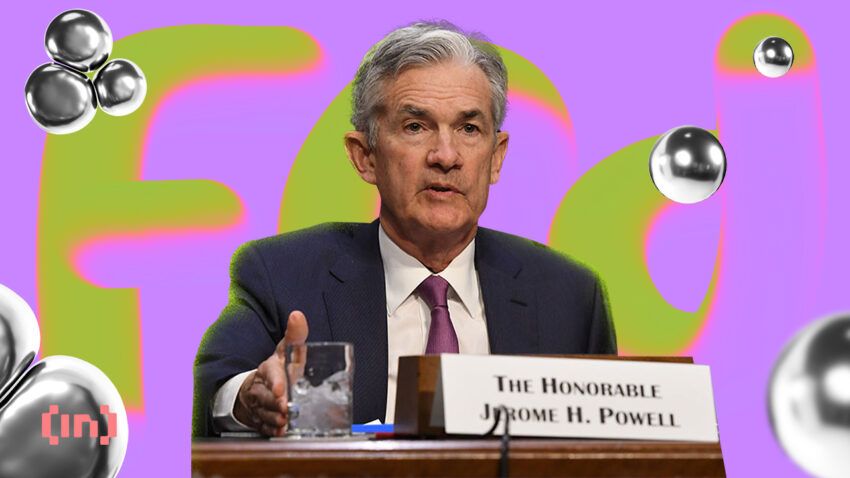The U.S. ADP Nonfarm Employment Change for February beat expectations, coming in higher than the 200,000 estimates at 242,000, indicating that wage growth will likely contribute to continued aggressive tightening by the Fed.
The ADP Nonfarm Employment Change, which analyzes the payrolls of around 400,000 U.S. business clients before the monthly U.S. jobs report, recorded an increase of 242,000 new jobs in February 2023.
Federal Reserve Will Consider ADP Jobs Report at Next Meeting
The report is jointly released monthly by the ADP Research Institute and the Stanford Digital Economy Lab two days before the Labor Department releases job numbers for the previous month.
According to Investopedia, higher unemployment forces employers to pay higher wages to attract labor. Companies pass these rising input costs onto consumers of their goods and services.
Speaking at a hearing of the House Financial Services Committee today, Federal Reserve (Fed) Chair Jerome Powell said that the Open Markets Committee would consider the ADP report, the jobs report due on Feb. 10, 2023, and the U.S. Consumer Price Index, and the Personal Consumption Expenditure numbers when deciding its next rate hike.
After the ADP news, Bitcoin was mostly flat, briefly dipping to $21,990.68 from $22,016 before rising to $22,217 at press time. ETH declined slightly to $1,550 before increasing to $1,558 at press time.
Cryptocurrencies likely absorbed most of the shock after Powell’s speech yesterday, where he indicated that a strong labor market could mean that the central bank could continue increasing the pace of interest rate hikes. He added that the terminal rate, the interest rate at which U.S. inflation drops to 2%, may be higher than the bank’s original estimate.
In January, jobs increased by 517,000, higher than the Dow Jones estimate of 187,000.

Unemployment came in at a decades-low 3.4%, beating forecasts of 3.6%.
Fed’s Powell Challenged on Unemployment Thesis
Members of both the Senate and the Housing Congressional Committees that Powell has appeared before in the last two days severely criticized the Federal Reserve’s correlation of inflation with increased unemployment and its assertion that lower levels of unemployment would correlate with lower inflation.
Before the pandemic, monetary policymakers like the Federal Reserve used the Phillips Curve, developed by New Zealand economist William Phillips, to find the optimal unemployment rate for a given inflation target. According to the graph, the Fed’s 2% inflation target corresponds with 5% unemployment.

Yesterday, Senator Elizabeth Warren of the United States Senate Committee On Banking, Housing, and Urban Affairs chastised Powell for touting unemployment’s effects on American households.
“Chair Powell, if you could speak directly to the two million hardworking people who have decent jobs today who you’re planning to get fired over the next year, what would you say to them? How would you explain your view that they need to lose their jobs?” Warren challenged Powell.
Powell rebuffed the comment, arguing that more than two million are affected by ongoing inflation.
Today, House Financial Services Committee Chair Patrick McHenry, who created a digital asset subcommittee in January this year, advised Powell to resist Democrats’ prioritizing their agenda over the prosperity of Americans.
“And now looking at the Fed, President Biden’s kowtowing to the far left is what got us into this inflationary mess. I urge you to reject the ideologues who put their social agenda ahead of economic prosperity,” McHenry stated.
For Be[In]Crypto’s latest Bitcoin (BTC) analysis, click here.
Disclaimer
In adherence to the Trust Project guidelines, BeInCrypto is committed to unbiased, transparent reporting. This news article aims to provide accurate, timely information. However, readers are advised to verify facts independently and consult with a professional before making any decisions based on this content. Please note that our Terms and Conditions, Privacy Policy, and Disclaimers have been updated.


